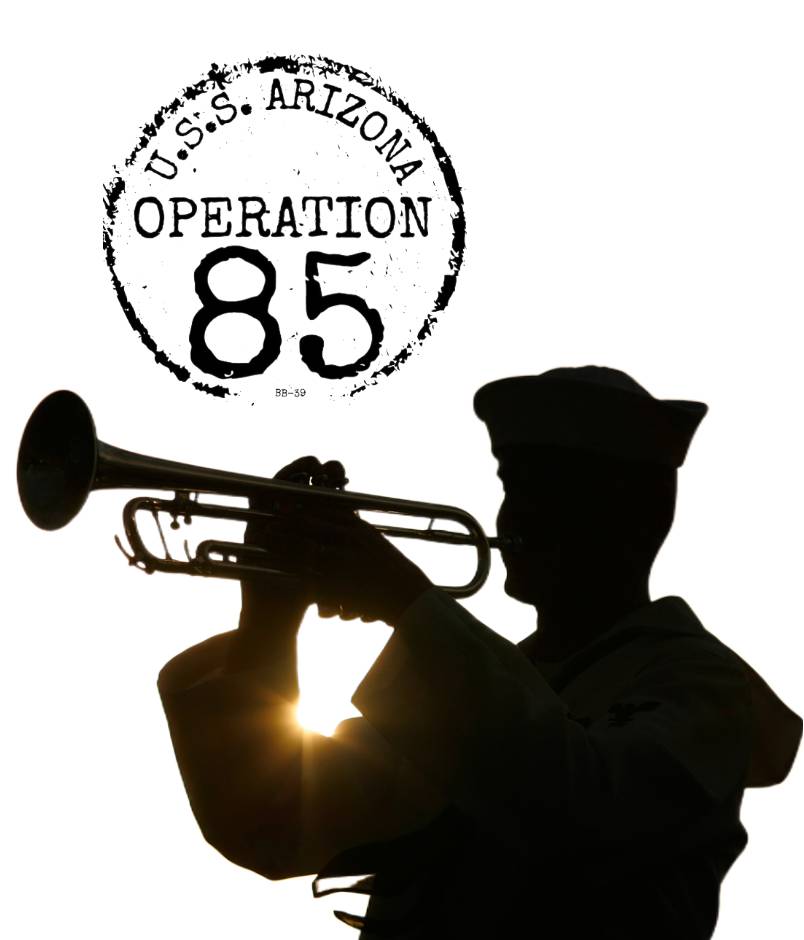
- Rank:
- Branch:
- Home Town:
- Date Of Birth:
- Disposition:
- Family DNA on File:
CPL Burnis Leroy Bond
Burnis Leroy Bond was a Mississippi farm boy.
A brief October 1936 news article mentioned that he was one of three Stone County 4-H Club members participating in a pure-bred pig project.
His life soon changed. By the next summer, just as he turned 18, he enlisted in the Civilian Conservation Corps — a federal Depression-era jobs program — and was sent to North Carolina.
When his service ended, he returned to his hometown of Wiggins about 40 miles northwest of Biloxi. His father, John, died unexpectedly in the fall of 1938 while tending to his cows. The son attended Wiggins High and played on the football team.
It remained difficult for young men to find work, though, so in March 1940 Burnis Bond left Wiggins — population 1,141 — and took the course of many others his age. He joined the military. He was a Marine Corps corporal on the U.S.S. Arizona when he was killed in the Japanese attack on Pearl Harbor, Dec. 7, 1941.
Survivors described Mr. Bond, burned nearly black, directing his 5-inch gun crew just before the bombed battleship exploded, sank, and had to be abandoned.
His body was one of the few recovered from the Arizona. After the war his remains were returned to Wiggins, where military rites were performed at the Veterans of Foreign Wars post, which by then had been named in his memory. A church service took place at Wiggins Baptist. He was buried at Woodlawn Cemetery.
Mr. Bond was born July 26, 1919. He was survived by his mother, Ellen Sinclair Bond, a homemaker. At least one brother, J. L. Bond, served in the Coast Guard in World War II.
He was a member of the Arizona’s whale boat team, which was runner-up in the Pacific fleet championship races in the fall of 1941.
Burnis Leroy Bond was killed during the Japanese attack on Pearl Harbor.
As general quarters sounded, Baker and Nightingale, among the others, headed for their battle stations. Aft, congestion at the starboard ladder, that led through casemate no. 9, prompted Second Lieutenant Carleton E. Simensen, USMCR, the ship’s junior Marine officer, to force his way through. Both Baker and Nightingale noted, in passing, that the 5-inch/51 there was already manned, and Baker heard Corporal Burnis L. Bond, the gun captain, tell the crew to train it out. Nightingale noted that the men seemed “extremely calm and collected.
As Lieutenant Simensen led the Marines up the ladder on the starboard side of the mainmast tripod, an 800-kilogram converted armor-piercing shell dropped by a Kate from Kaga ricocheted off the side of Turret IV. Penetrating the deck, it exploded in the vicinity of the captain’s pantry. Sergeant Baker was following Simensen up the mainmast when the bomb exploded, shrapnel cutting down the officer as he reached the first platform. He crumpled to the deck. Nightingale, seeing him flat on his back, bent over him to see what he could do but Simensen, dying, motioned for his men to continue on up the ladder. Nightingale continued up to Secondary Aft and reported to Major Shapley that nothing could be done for Simensen. An instant later, a rising babble of voices in the secondary station prompted Nightingale to call for silence. No sooner had the tense quiet settled in when, suddenly, a terrible explosion shook the ship, as a second 800-kilogram bomb — dropped by a Kate from Hiryu — penetrated the deck near Turret II and set off Arizona’s forward magazines. An instant after the terrible fireball mushroomed upward, Nightingale looked out and saw a mass of flames forward of the mainmast, and much in the tradition of Private William Anthony of the Maine reported that the ship was afire *. “We’d might as well go below,” Major Shapley said, looking around, “we’re no good here.” Sergeant Baker started down the ladder. Nightingale, the last man out, followed Shapley down the port side of the mast, the railings hot to the touch as they made their way below.
Baker had just reached the searchlight platform when he heard someone shout: “You can’t use the ladder.” Private First Class Kenneth D. Goodman, hearing that and apparently assuming (incorrectly, as it turned out) that the ladder down was indeed unusable, instinctively leapt in desperation to the crown of Turret III. Miraculously, he made the jump with only a slight ankle injury. Shapley, Nightingale, and Baker, however, among others, stayed on the ladder and reached the boat deck, only to find it a mass of wreckage and fire, with the bodies of the slain lying thick upon it. Badly charred men staggered to the quarterdeck. Some reached it only to collapse and never rise. Among them was Corporal Bond, burned nearly black, who had been ordering his crew to train out no. 9 5-inch/51 at the outset of the battle; sadly, he would not survive his wounds.
Shapley and Corporal Nightingale made their way across the ship between Turret III and Turret IV, where Shapley stopped to talk with Lieutenant Commander Samuel G. Fuqua, Arizona’s first lieutenant and, by that point, the ship’s senior officer on board. Fuqua, who appeared “exceptionally calm,” as he helped men over the side, listened as Shapley told him that it appeared that a bomb had gone down the stack and triggered the explosion that doomed the ship. Since fighting the massive fires consuming the ship was a hopeless task.
Source: Travis Davis
Information contributed by NEIL O’CONNOR (48663429
Sources: Stone County (Mississippi) Enterprise; Biloxi (Mississippi) Daily Herald; the Hattiesburg (Mississippi) American; U.S. Headstone Application for Military Veterans; Census; grave markers. This profile was researched and written on behalf of the U.S.S. Arizona Mall Memorial at the University of Arizona.
